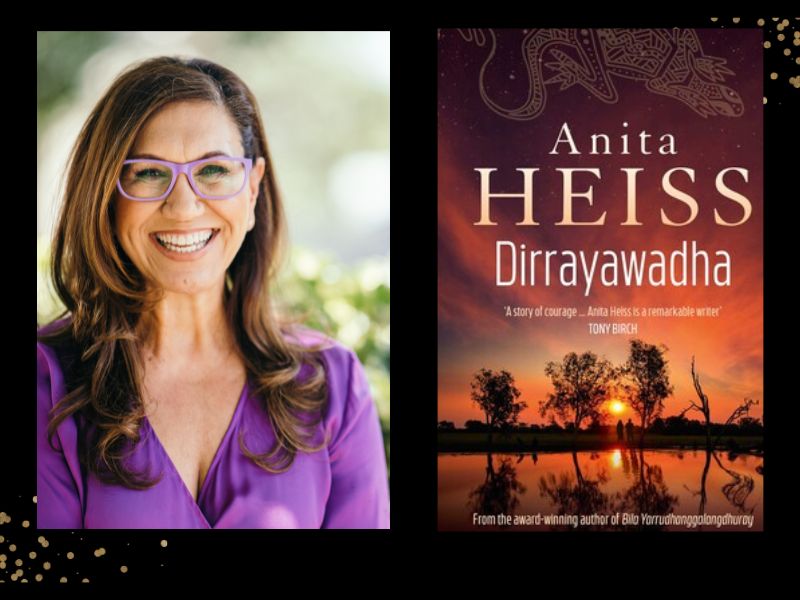When the prolific and award-winning Anita Heiss, author of 23 books, undertakes the challenge of crafting a novel that compels ‘the memory of this nation to confront the truth of war on our land; the bloodshed and trauma,’ the promise is clear: a profound act of truth-telling grounded in compassion and humanity.
Dirrayawadha is an epic historical fictional tale rooted in a love story. It is set in the 1820s during the Bathurst War on Wirandyuri Country. To set the tone, Heiss opens with a declaration of the story’s purpose and historical weight. The conflicts known by different names as detailed in the book – be they the Homeland Wars, Frontier Wars or Forgotten Wars – are reimagined.
The novel portrays the prominent Aboriginal warrior and resistance leader, Windradyne. He emerges as a brave individual, embodying roles of a brother, father and husband. He’s also known as “Saturday”, a dismissive moniker coined by the British.
His sister Miinaa is a young Wiradyuri woman with warrior fire in her belly. She is full of yindyamarra (to respect, to honour, be polite) for all, especially her family, culture and Country. As well as her brother, Miinaa’s immediate family consists of her two young nephews and niece. Windradyne visits frequently to bring wambuwuny (kangaroo) and other traditional tucker. He also brings news of unrest from other parts of their ngurambang.
They reside in Cloverdale, where she is employed as a domestic worker for the Nugent family, on ‘the land granted to, and now legally owned by, white settlers’.
The owners of the property, Irish settlers, Andrew and Susanna Nugent, have three children who co-exist peacefully alongside other gudha-galang (children).
Along with glimpses of positive cultural exchange, the community life in Cloverdale illuminates the striking parallels between Indigenous spiritual beliefs and the Christian faith. In her endeavour to absorb the knowledge surrounding her, Miinaa discerns that the Christian figures of “Lord” and “Jesus” embody a spiritual essence akin to her own Biyaami, the Creator spirit in her Indigenous tradition.
Despite the peaceful co-existence with the Nugents, Miinaa doesn’t have much to smile about. She misses her extended miyagan (family), but trusts her brother’s decision to live here for safety’s sake. Remembering her experience of seeing the white ghosts for the first time on her land, she is haunted by the memory of the day that: ‘Gubbna Ghost raised a piece of red, blue and white material and renamed her homeland a settlement, calling it “Bathurst”.’
Then an unlikely new resident arrives, Daniel O’Dwyer – the Irish convict with smiling eyes, a shamrock tattoo and zero riding skills.
Beneath the veneer of a blossoming love story, the spectre of displacement looms ever closer over the Wiradyuri people, as the shadow of war also darkens their horizon.
Language plays a pivotal role in Heiss’ work and Dirrayawadha cements this by demanding patience from its readers. The incorporation of Wiradyuri language throughout the book (with definitions in the glossary at the start) underscores the significance of communication across cultures and generations.
Across 30 chapters, the author presents a gradual progression of events; the narrative’s underlying theme is of Cloverdale’s mission to cultivate community harmony amid wartime contradictions.
While navigating a dark historical chapter can elicit strong emotions, Heiss creates fully rounded characters that welcome readers into their world.
Read: Book review: The Echoes, Evie Wyld
Her extensive body of work shares a common element: a dedicated mission to celebrate and safeguard Indigenous cultures through literature; Dirrayawadha resurrects a crucial chapter of Australian history.
Dirrayawadha (Rise Up), Anita Heiss
Publisher: Simon & Schuster Australia
ISBN: 9780733649264
Format: Paperback
Pages: 352pp
Published: 31 July 2024
RRP: $32.99






